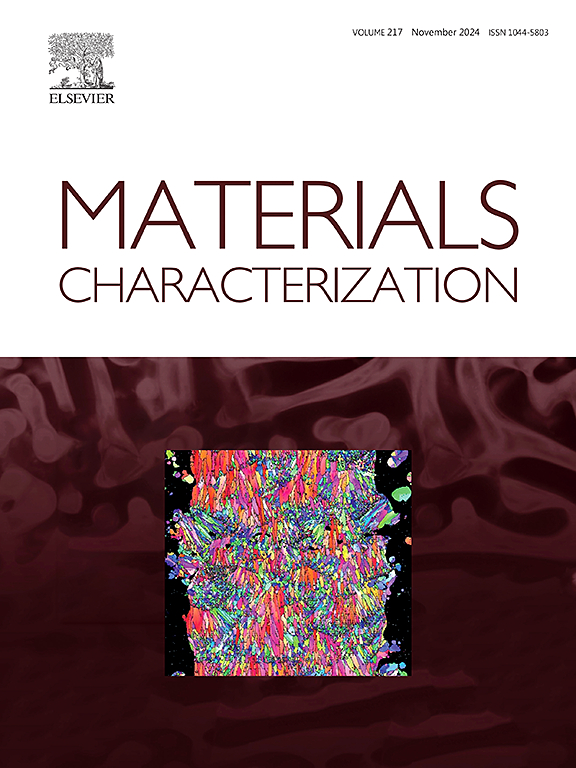Effect of in-situ formed multi-carbides on the microstructure and wear resistance of AlCoCrFeNi-based high entropy alloy laser cladded coatings
IF 4.8
2区 材料科学
Q1 MATERIALS SCIENCE, CHARACTERIZATION & TESTING
引用次数: 0
Abstract
In this study, in-situ formed multi-carbides (NbTiZr)C reinforced AlCoCrFeNi high entropy alloy composite coatings were prepared on the surface of Q235 steel using laser cladding technology. These coatings were compared with those reinforced by binary carbides NbC, TiC and ZrC. Microstructural analysis revealed that all coatings comprised a BCC matrix phase interspersed with dendritic carbide phases. The multi-carbides (NbTiZr)C were successfully synthesized during the laser cladding process. Compared to coatings containing individual in-situ NbC, TiC, and ZrC, the multi-carbides exhibited significantly refined grain sizes, measuring only 41 %–83 % of the grain size observed in other coatings. The primary wear mechanism at room temperature for all coatings was identified as abrasive wear. The disordered lattice structure of the multi-carbides effectively enhanced resistance to uneven dislocation propagation, improving their ability to resist micro-cutting. Additionally, the refined carbide size effectively suppressed crack initiation sensitivity, thereby reducing the brittleness of the coating. As a result, the wear resistance of the multi-carbides reinforced coating was approximately 1.44–2.89 times higher than that of the other coatings. At high temperature of 800 °C, the dominant wear mechanisms were abrasive wear and oxidation wear. The multi-carbides reinforced coating was capable of forming a composite protective film with a gradient composition on the wear surface, which provided improved lubricity and self-healing properties. This effectively reduced the high-temperature wear rate, yielding a wear resistance approximately 2.13–2.97 times higher than that of other coatings.
求助全文
约1分钟内获得全文
求助全文
来源期刊

Materials Characterization
工程技术-材料科学:表征与测试
CiteScore
7.60
自引率
8.50%
发文量
746
审稿时长
36 days
期刊介绍:
Materials Characterization features original articles and state-of-the-art reviews on theoretical and practical aspects of the structure and behaviour of materials.
The Journal focuses on all characterization techniques, including all forms of microscopy (light, electron, acoustic, etc.,) and analysis (especially microanalysis and surface analytical techniques). Developments in both this wide range of techniques and their application to the quantification of the microstructure of materials are essential facets of the Journal.
The Journal provides the Materials Scientist/Engineer with up-to-date information on many types of materials with an underlying theme of explaining the behavior of materials using novel approaches. Materials covered by the journal include:
Metals & Alloys
Ceramics
Nanomaterials
Biomedical materials
Optical materials
Composites
Natural Materials.
 求助内容:
求助内容: 应助结果提醒方式:
应助结果提醒方式:


